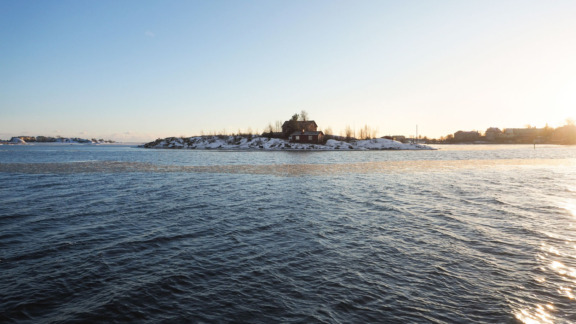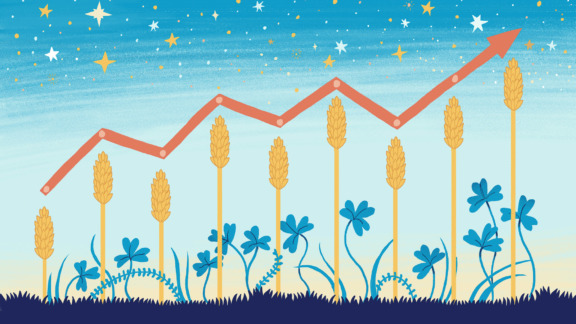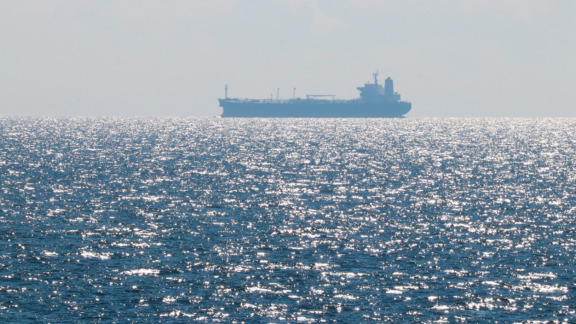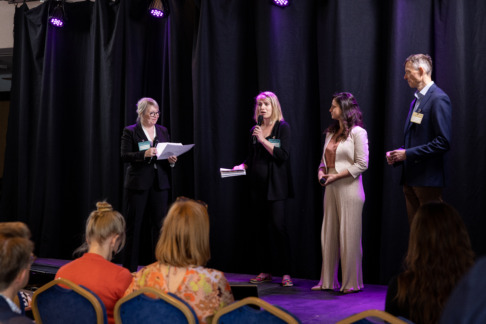FREQUENTLY ASKED QUESTIONS
Find answers to the most frequently asked questions about BSAG, along with terms and definitions related to our activities.
Filter
ABout BSAG
What is BSAG, and who founded it?
BSAG is an acronym for our English name, Baltic Sea Action Group.
We are an independent non-profit foundation based in Finland. The foundation’s mission is to save the Baltic Sea.
BSAG was established in 2008 by Ilkka Herlin, Saara Kankaanrinta, and Anna Kotsalo-Mustonen.
These three friends of the Baltic Sea had previously worked together on another foundation’s Baltic Sea project. When that project ended, they wanted to continue their work in a new, effective and comprehensive way.
What does BSAG do?
We are engaged in ambitious work that currently focuses on promoting regenerative agriculture, developing responsible shipping, and protecting marine biodiversity.
Who owns BSAG?
As a foundation, BSAG has no owners or members.
Does BSAG make a profit?
The foundation does not seek to make a profit – it raises and uses funds for a specific purpose. This purpose is to save the Baltic Sea.
BSAG’S ACTIVITIES
Does BSAG operate only in Finland?
Although BSAG mainly operates in Finland, BSAG projects often extend into other areas of the Baltic region.
What does BSAG do to save the Baltic Sea?
We want to achieve far-reaching and long-lasting improvements. That’s why we must be bold and innovative in finding effective new ways to help the sea. We must also harness cooperation and the power of the masses. We create examples that are easy for others to follow.
We seek to determine all the things that damage the Baltic Sea and the reasons why they do so. We thoroughly delve into the root causes of the sea’s poor condition. We identify the issues we should influence and whom we need to collaborate with.
We bring together partners, authorities, influencers, researchers, policymakers, and financiers. We help them take concrete action. Engaging in broad, long-term collaborative projects is often the most effective, as they bring about more change than individual projects.
Who does BSAG collaborate with?
BSAG finds and brings together the companies, researchers, policymakers, and other parties required to save the Baltic Sea.
BSAG always finds the partners that are required for each particular project. For example, [the Carbon Action project] seeks to promote regenerative agriculture and carbon farming. It involves a large pool of farmers and researchers, the Finnish Meteorological Institute, Sitra, and the Ministry of Forestry and Agriculture. A significant number of other foundations are also funding this project.
Read more about our current projects.
How does BSAG finance its activities?
Our projects are large-scale and long-term efforts, which means we also need long-term partners and financiers to enable them.
Most of our funding comes from project financiers, such as ministries or the EU, and corporate and community partners who want to get involved because they are concerned about the Baltic Sea and climate.
However, private donations and corporate donations are also important. Every euro counts.
How does BSAG spend the funding it receives?
BSAG receives its funding partly as project financing and partly as donations.
The funds we receive for our projects are used following the project plans. We are careful to ensure that we only get involved in projects that help the Baltic Sea and contribute to systemic change.
Donations are vital to us. They make us agile. Donations enable us to monitor legislative developments and use our knowledge to influence any necessary points – and we ensure access to the best available information by maintaining contact with researchers and international partners.
We also work efficiently and promise that we will leverage three euros from elsewhere for every euro you donate to our Baltic Sea work.
Does BSAG give grants or subsidies?
Unlike most other foundations, BSAG is not a financier. Instead, we collect money to fund concrete action to save the Baltic Sea.
Why should I support BSAG?
The Baltic Sea is unique. Its condition affects not only us but also future generations. It’s not just a question of whether we can still swim or sail in the sea or whether the fish will die. The state of the sea affects our lifestyles, health, and well-being.
The poor condition of the Baltic Sea, the climate crisis, and the loss of biodiversity are all linked. The solutions promoted by BSAG take the big picture into account – including humans. At best, the action we take will have a positive impact on several problems. For example, regenerative agriculture will mitigate climate change, biodiversity loss, and the eutrophication of the Baltic Sea. It will also improve crop safety and farmers’ economy.
I am interested in saving the Baltic Sea. Can I get a job or internship at BSAG?
It’s great that you’re interested! Contact us for more information.
Does BSAG organise lectures or training?
We can provide training and lectures case-by-case at our partners’ request. We want to use the funds received for Baltic Sea work as effectively as possible, so we consider requests carefully.
THE BALTIC SEA
Why do we need to save the Baltic Sea?
The Baltic Sea is not doing very well. Its waters are cloudy, its beaches and shallows are overgrown, algae are growing in overabundance, and fish and other marine organisms are suffering. Large areas of the seabed have become entirely devoid of oxygen and cannot sustain life.
We tend to think we are surrounded by pristine nature, yet the Baltic Sea is, unfortunately, one of the most polluted seas in the world.
The Baltic Sea is very shallow compared to the world’s other seas, and 85 million people live within its catchment area. This poses a significant challenge for the sea. The Baltic Sea is particularly vulnerable because it contains so little water and so many people live close to it.
The main problems in the Baltic Sea include eutrophication resulting from excessive nutrient loads, a loss of marine biodiversity, the climate crisis, hazardous substances entering the water, and the environmental risks associated with maritime transport.
How can we save the Baltic Sea?
There are ways of saving the Baltic Sea, but they are not easy, simple, or fast.
In a natural ecosystem, everything is connected. Climate change is related to the condition of our seas. The same goes for ecological balance. To save the sea, we must understand what is happening in the soil.
Improving the state of the Baltic Sea will require multidisciplinary research, a lot of political decision-making, and active input from companies, farmers, and citizens. Every one of us can play our part in improving the health of the Baltic Sea as citizens, as employees, or in our leisure time.
If you are a farmer, policymaker, influencer, or researcher, your actions will have a direct impact. But many other sectors can also develop their operations in a direction that will positively impact the environment.
How is the Baltic Sea linked to climate change?
As an area of shallow, brackish water, the Baltic Sea is particularly vulnerable to advancing climate change. Increased rainfall will lower the sea’s salinity, and rising temperatures will heat its waters and reduce ice cover. Most species in the Baltic Sea will suffer from these changes. However, fast-growing algae are becoming more successful, which means climate change accelerates eutrophication.
Conversely, vibrant marine ecosystems mitigate climate change, as the sea will then sequester much carbon. A sea that is diverse in terms of species will also be more resilient to changes and will be able to adapt to them. The Baltic Sea can cope with climate change – and even help to mitigate it – but only if we give it adequate protection and tackle the excess nutrient loads caused by humans.
How long will it take to save the Baltic Sea? Has there been any change for the better?
There has been a significant reduction in the nutrient input causing eutrophication in the Baltic Sea. However, climate change and hazardous substances are making it difficult to improve the condition of the Baltic Sea.
Earlier nutrient discharges have also created an “internal load,” which means it will still take several decades to get the Baltic Sea into good shape, even if the current load can be controlled. However, local changes will be noticeable more quickly.
THE BALTIC SEA AND FARMING
What do farmers have to do with saving the Baltic Sea, and what is regenerative farming?
Land, sea, and climate are all connected. Phosphorus and nitrogen are essential for farming, but when they end up in the Baltic Sea, they cause eutrophication. This hurts everything; plants, the soil, the sea, its vegetation and inhabitants, farmers, and humans.
Regenerative farming enables essential nutrients to remain in the soil for plants, reducing nutrient runoff into the sea. It also stores carbon in the soil and helps to mitigate climate change. That’s why we also talk about “carbon farming.” Both crop safety and soil health will improve – and everyone will benefit.
What is the Carbon Action platform?
The Carbon Action platform is a collaboration platform led by BSAG. It enables researchers, farmers, and companies to work together to promote farming that will mitigate climate change and biodiversity loss while also improving crop safety and the condition of waterways. The Finnish Meteorological Institute coordinates the platform’s multidisciplinary research projects, which are united by a common goal: promoting soil carbon sequestration.
What is the Carbon Action Club, and how can I join it?
The Carbon Action Club is a community that is open to everyone in Finland free of charge. Members are among the first to access information about topics such as improving soil health and enhancing biodiversity in agricultural environments.
What is meant by regenerative farming and carbon farming?
Increasing the amount of carbon stored in the soil during food production is called “carbon farming”. Carbon farming is just one aspect of regenerative agriculture. It is used to safeguard food production and improve the environment based on local conditions.
Regenerative agriculture considers local conditions, the farmer’s economic position, and the state of the environment. Soil health affects both crop yield and tolerance to extreme weather conditions. Healthy soils also support the farm’s financial sustainability.
In the [Carbon Action corporate collaboration], researchers, farmers, and companies work together to promote multi-benefit farming that sequesters carbon.
I am a farmer. Where can I get more information about yield-improving regenerative farming or carbon farming?
You can start by reading about our Carbon Action collaboration, which involves almost a thousand farmers across Finland. There is much information about regenerative farming on these pages.
You can also take a free online course in regenerative farming, which will enable you to farm according to the needs of your farm.
Terms
What does eutrophication mean?
Eutrophication is caused by excessive nutrient levels in a body of water. Algae grow in excess; the water becomes cloudy, beaches and shallows become overgrown, and the makeup of the aquatic population changes. These excess nutrients, particularly nitrogen and phosphorus, enter the sea because of all kinds of human activity: agriculture, forestry, industry, transport, and households.
Eutrophication affects the entire ecosystem. It has already caused extensive anoxic areas in the Baltic Sea, that is, oxygenless areas that can no longer sustain life.
What do “internal loading” and “oxygen depletion” mean?
Internal loading is a state in which the sediment accumulated on the seabed (the layers of soil) begins to release stored phosphorus (nutrients) back into the water due to a lack of oxygen. The increased phosphorus content of the water accelerates the growth of algae and cyanobacteria..
When algae and other organic matter die, it sinks to the bottom. Here, benthic organisms and degrading microbes start to decompose it. This decomposition work consumes oxygen from the bottom layer of water.
The process is a self-feeding loop; the more oxygen is consumed, the more phosphorus is released from the seabed. Eutrophication will therefore accelerate, and the amount of organic matter to be decomposed will further increase. At worst, oxygen depletion may occur on the seabed.
Oxygen depletion, or anoxia, is a state with too little oxygen to sustain life. When the oxygen runs out, toxic hydrogen sulfide starts to form in the water, which causes the death of benthic and other aquatic organisms.
The nutrient load in the Baltic Sea has been high for decades and has contributed to forming anoxic seabeds. The phosphorus now being released from the seabed ended up in the water long ago. By preventing excessive inputs of nutrients into the Baltic Sea, we can reduce its internal load and future oxygen depletion.
What are the grey and black waters generated by ships, and why should they be unloaded ashore?
Just like households, maritime transport generates a variety of wastewater. The grey water has been used for domestic purposes and washing. It may also contain ground food waste and occasionally even black water. Black water is sewage. These wastewaters contain nutrients, bacteria, and microplastics.
Cargo ships are legally allowed to discharge wastewater into the Baltic Sea. However, these discharges are eutrophicating the Baltic Sea and worsening its already poor condition. We launched our Ship Waste Action collaboration to help seafarers act responsibly and unload their wastewater into the reception facilities available at ports.
What are underwater conservation areas?
Baltic Sea species and their habitats can be protected by establishing conservation areas. A conservation area can be installed on dry land and in bodies of water.
Underwater protection primarily involves the protection of nature below the water’s surface. For example, placing restrictions on dredging, anchoring, or other activities that disturb the seabed or restricting fishing or movement in a particular water area. Conservation-related restrictions will vary from place to place based on the specific type of protection required in each area.
Conservation aims to let flora and fauna live peacefully and enable nature to maintain vitality. Aquatic conservation does not seek to close off the sea to humans. And in the densely populated archipelago, in particular, it is essential to reconcile any restrictions with the needs of local people.
What is regenerative agriculture?
According to BSAG, regenerative agriculture is an agricultural system that in connection with food production, aims to curb climate change and to continuously and comprehensively improve the state of the environment.
We emphasise the renewal and improvement of key resources in the agricultural system, such as soil health, the farmer’s economy, and the welfare of people and animals. Adapting farming practices according to the conditions of each farm is also an important part of a regenerative agricultural system.
The definition of the Finnish equivalent of the term “regenerative agriculture” was compiled in consultation with Finnish farmers, partner companies, and terminology experts. The definition is only meant to serve BSAG’s purposes.
What is regenerative farming?
Regenerative farming is a farming method that, in connection with food production, aims to continuously and comprehensively improve soil health, water protection and agricultural ecosystems.
BSAG uses the term regenerative farming to emphasise farm-level actions as a complement to the term regenerative agriculture, which refers to the entire agricultural system. The farm-level actions include increasing year-round plant cover, minimising soil tillage, diversifying crop rotations, and applying adaptive grazing.
These methods aim to store carbon in the fields, increase yields and improve nutrient cycling. They also aim to improve soil health and aquatic ecosystems, and increase biodiversity. Good water management and soil structure are the foundation of regenerative farming.
What is carbon farming?
Carbon farming is a farming method that, in connection with food production, aims to increase the long-term storage of carbon in the soil and reduce greenhouse gas emissions from arable land.
The concept emphasises the effects of farming practices on carbon sequestration. In practice, carbon sequestration has other benefits too, such as improving soil health and crop yields.
The long-term storage of carbon in the soil by plants is a complex process. Through assimilation, plants produce sugars that feed soil microbes. The microbial activity accumulates carbon compounds in the soil, which bind soil particles together to form soil aggregates. A good aggregate structure tells us that there is life in the soil. The carbon compounds that accumulate on the surfaces of soil particles and in the soil aggregates increase the soil’s carbon stock.
Another important point to note about carbon farming is that it must always be done according to soil type, with the aim of either increasing or maintaining soil carbon stocks. For example, in clay soils, it is often sensible to try to add carbon to increase soil tilth. In peat soils, it is not possible to add carbon, but it is better to try to reduce the amount of carbon escaping to the atmosphere.
What are adaptive farming practices?
Adaptive farming methods go hand in hand with regenerative farming. In a nutshell, adaptive farming is the flexible and situational use of farming methods, while learning from experience and developing the methods continuously.
In addition, farmers share knowledge with their peers. Regenerative and adaptive farming emphasise the social role of the farmer as a driver in the community. This is part of a holistic approach to farming that has many positive consequences.
Adaptive farming methods help to achieve the objectives of regenerative farming, such as improving soil health, reducing the need for inputs, and strengthening the autonomy and well-being of the farmer. They also have positive environmental effects and enhance biodiversity.
Knowledge of carbon farming and adaptive farming is being built up, for example through the Adaptive Carbon Farming (HITTI) project led by BSAG.



